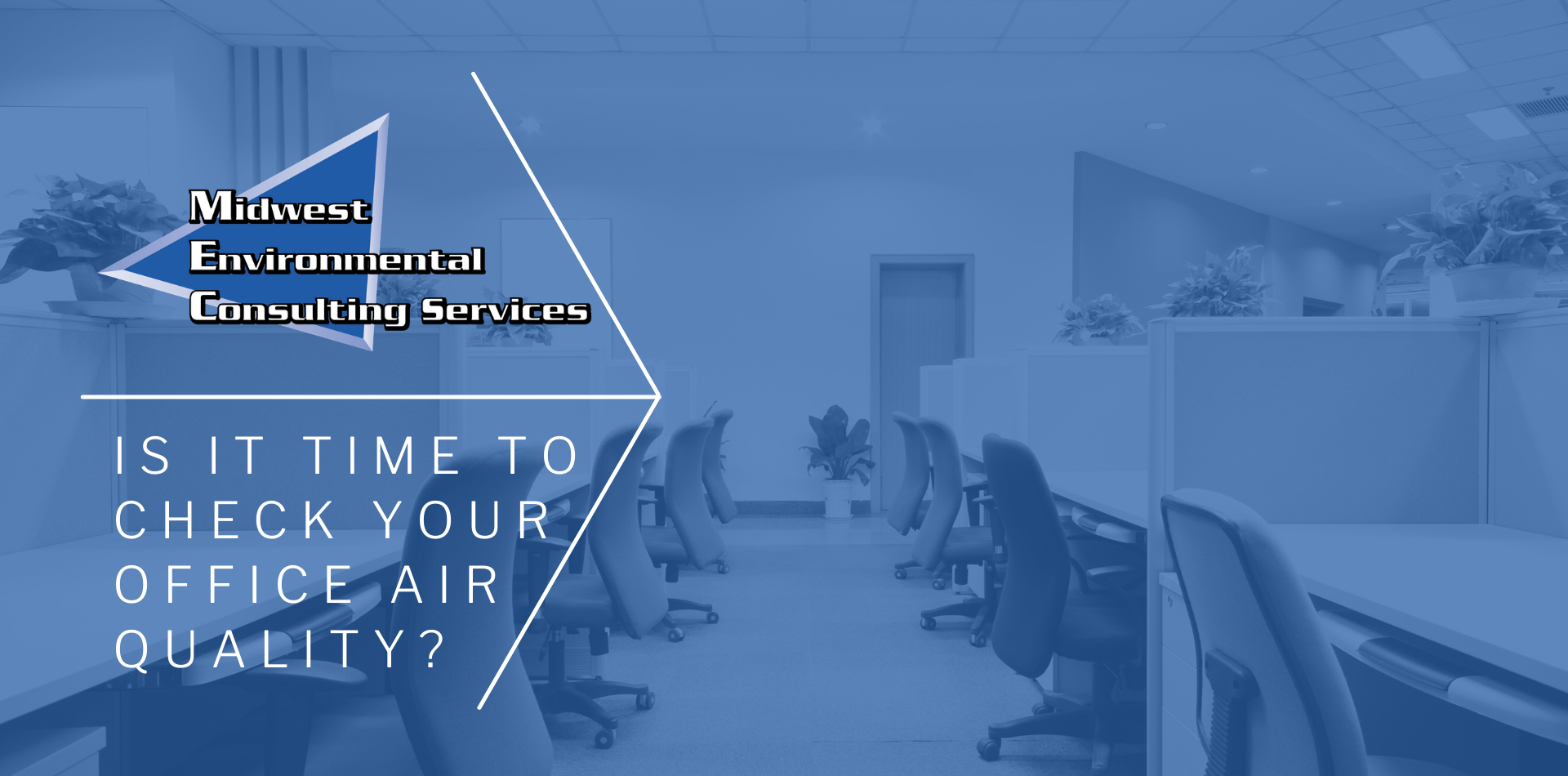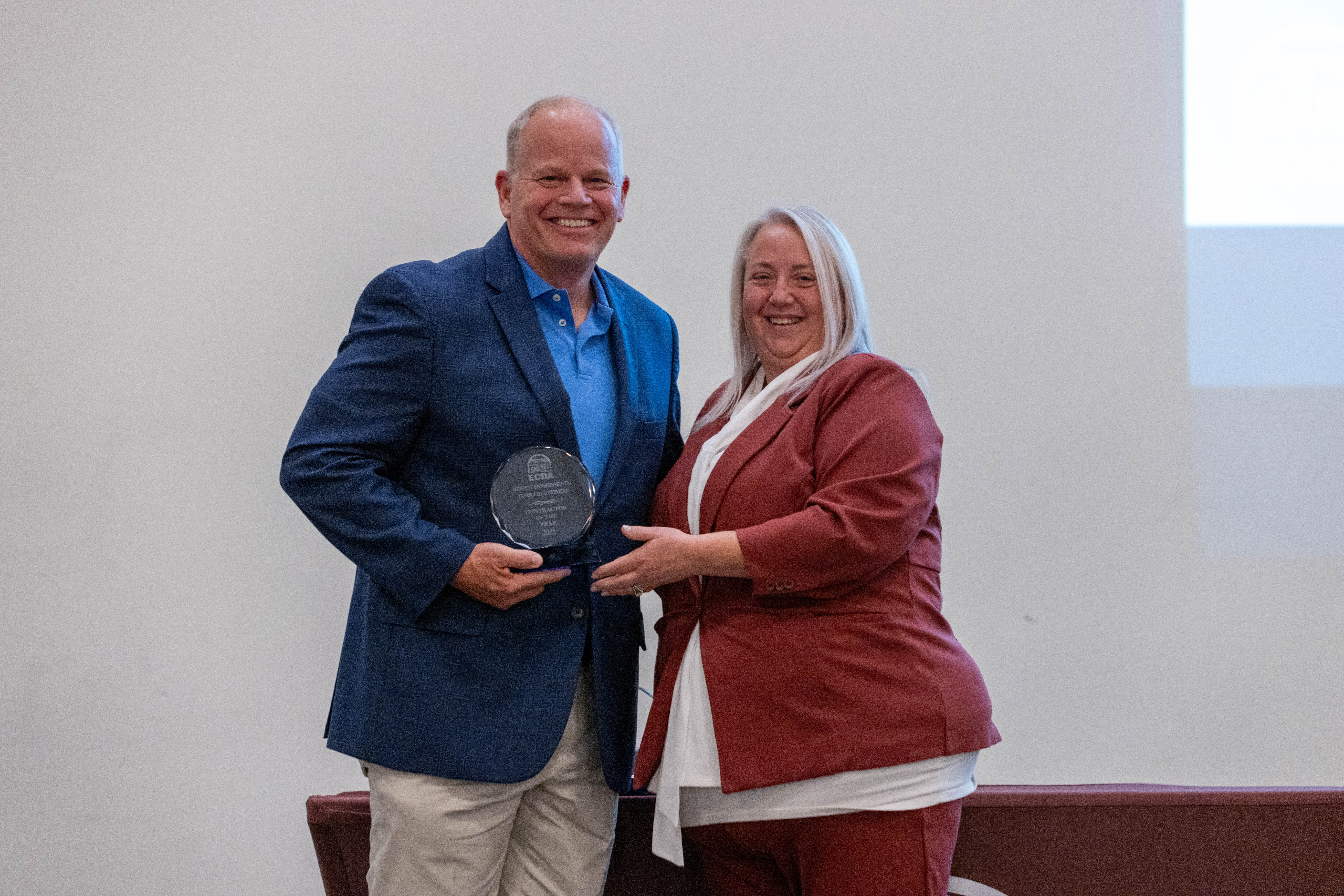Poor air quality in the office where you work can create health problems for employees and customers that come in. Don’t assume the indoor air quality where you work is good, find out what you can about it. There can be some red flags that indicate problems not being taken care of. Such issues may include:
-
Air that is stuffy or stale
-
Appearance of mold
-
Damp spots
-
High levels of humidity
-
Odors that don’t go away
Any of these conditions can warrant the need for indoor air quality testing. The overall air quality can affect the health of those inside. When you consider the amount of time you spend in that building, you have every right to be concerned about it. Sick Building Syndrome is real and should be taken seriously if employees often don’t feel well.
With the COVID-19 pandemic, indoor air quality testing has become more common. It should be done if employees often complain about the symptoms of not feeling well. Keep in mind, the problems can affect some people more than others. It can also be an issue of where a person’s office is located within that building. Such symptoms includes:
-
Changes to the skin
-
Chronic fatigue
-
Difficulty concentrating
-
Dry cough
-
Nausea
-
Frequent headaches
-
Respiratory concerns
Business owners have a responsibility to complete indoor air quality testing. They have a responsibility to ensure employees and customers have a safe environment. If there is an underlying issue due to air quality is going to reduce productivity. It is also going to cost the business money. It is time to look into it and resolve any issues that need to be addressed.
Efforts to Improve Indoor Air Quality
Don’t ignore concerns about the air quality within a building; take action to help identify any concerns. The right steps can help to improve indoor air quality. Understanding where to start and how to get the best outcome is important. Proper testing is a good place to start as it can identify any issues and where they are located.
Yet it may surprise you to discover experts don’t recommend that is what you do first. It all depends on what concerns you have. For example, If Covid-19 is the prime concern, sanitation and disinfection should be the first steps. Safe repeatable hygiene practices should follow right after. Following with HVAC solutions would be the next step.
Air Quality Standards are lacking
As you evaluate your options, you will discover OSHA doesn’t have standards and requirements in place to evaluate the overall indoor air quality in a building. The only settings where such requirements are in place involve certain businesses that use particular chemicals. There are some ventilation guidelines through ASHRAE, but they are only enforced if your local building code enforcer does so. Older buildings don’t have to meet the same guidelines as newer buildings either.
Types of Testing
There isn’t a one size fits all indoor air quality testing procedure for a building. Instead, it depends on the types of concerns in place. Some of them require taking air samples and others involve carefully investigating and looking for telling signs of problems such as mold spores. The overall design and functionality of the HVAC system should be looked at closely too.
There are tools and devices designed to help test the quality of the air. However, it takes time to get such results back and the testing process is very expensive. It often isn’t a solution many business owners can use.
Results of Testing
Another issue is the results of the testing can be open to interpretation. What do they mean? At what levels should you be concerned? Since there is a lack of air quality guidelines by OSHA, there is no threshold to say a level of a given form of contamination present is safe enough or too high. This subjective reading of the results means the business owner has to decide what they will do next based on the test results. Since some people are highly sensitive to such forms of contamination and others aren’t, that makes it very hard to determine the impact they have in a work environment.
Start with an Inspection
An inspection of the buildings is the best starting point according to OSHA. This is a good way to find out if there are air quality issues that need to be investigated further. A detailed inspection of all areas of the building needs to be completed. Look in storage areas and maintenance locations for any signs of contaminants. Don’t forget to look at the outside of it too. There may be a source outdoors that allows contaminants to come in through the ventilation design.
Check all chemicals used for production or cleaning. They need to be securely stored in proper containers. There are cleaning products that don’t emit much odor, and it is a good idea to consider them. Check for any signs of mold or mildew due to moisture issues or leaks. Don’t ignore any areas where you smell chemicals or an odd odor. They need to be thoroughly searched to find the underlying cause.
HVAC System
An HVAC inspection is recommended and should be done by a professional service. The inspection should include both humidity levels and ventilation flow to help reduce the risk of spreading COVID-19 through the building. The HVAC system can be a contributing factor to low air quality so it shouldn’t be overlooked.
When the system doesn’t work as it should, there may be too much humidity in the air. This can increase the risk of mold or mildew developing. Forms of contamination can be trapped inside of the building if the HVAC system isn’t well-designed or it has operational issues. Verify the ventilation system isn’t allowing any form of contamination from outside to enter the building. The ducts should be checked for signs of contaminants building up in them too.
It may be time to upgrade the design of your ventilation system. An expert can share with you what they recommend and the cost to complete it. They may identify duct areas that need to be repaired or replaced for the optimum value through the system. The ducts should be cleaned regularly so they don’t get clogged up. Mold can also be found in there so a regular inspection helps identify any such concerns.
If your building is a region known for high humidity, there are devices to help. They will reduce the moisture in the air. This can help reduce the risk of mildew or mold forming. It can also help reduce the chances of COVID-19 spreading.
Since COVID-19 can be transferred due to droplets in the air, checking the HVAC system is encouraged. The goal is to prevent such droplets from getting into the system. Such additional steps can be a way to reduce the risk of the virus spreading through your business. Carefully inspecting the building and HVAC system can be a wonderful way to evaluate the indoor air quality. Should you identify any problems, additional testing may be required.
Midwest Environmental Consulting Services is equipped to handle all environmental testing and industrial hygiene jobs. Our professional, experienced team creates safer work environments for your organization by providing long term, cost-effective solutions to a wide range of environmental issues. Call us today to discuss your project, we will be with you every step of the way.




